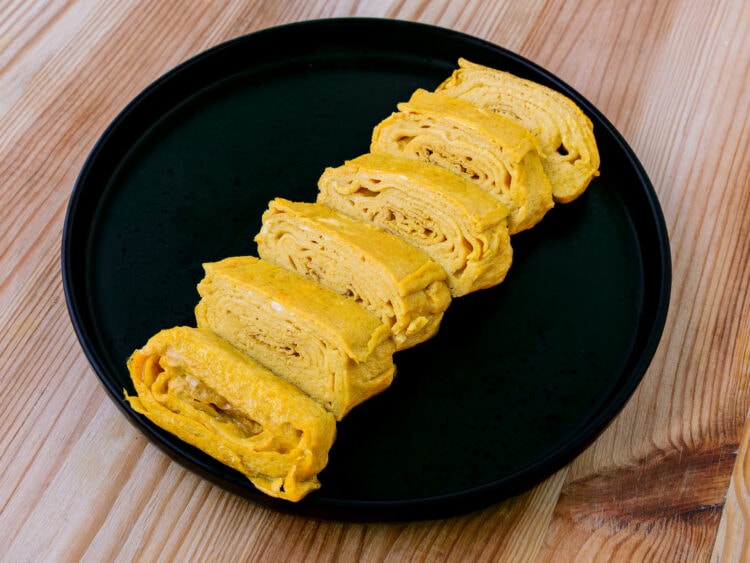Tamagoyaki, often compared to a mille-feuille omelette for its delicate, stacked layers, is a cornerstone of Japanese cuisine, pairing simplicity with refined elegance.
Celebrated in humble bentos and on polished sushi plates alike, tamagoyaki pays homage to umami, the deep, layered taste at the heart of Japanese cooking.

Each carefully folded layer showcases patience and skill, reflecting the Japanese pursuit of perfection and visual harmony. This philosophy contrasts with that of the Vietnamese crêpe banh xeo or omurice.
Tamagoyaki? Try Dashimaki
Dashimaki is a more delicate, deeply flavored take on traditional tamagoyaki. By whisking in dashi, the foundational broth of countless Japanese dishes, it delivers extra umami and a gentle hint of sweetness.

Its light, airy texture and subtle flavor embody wabi-sabi, the Japanese appreciation of fleeting, imperfect beauty.
The traditional rectangular shape
Traditionally, tamagoyaki is cooked in a rectangular pan called a “makiyakinabe”, underscoring the value placed on form and presentation. Using a regular round pan is perfectly acceptable today, illustrating how innovation can sit comfortably beside tradition. If you would like the classic pan, you can still buy the pan here on Amazon.
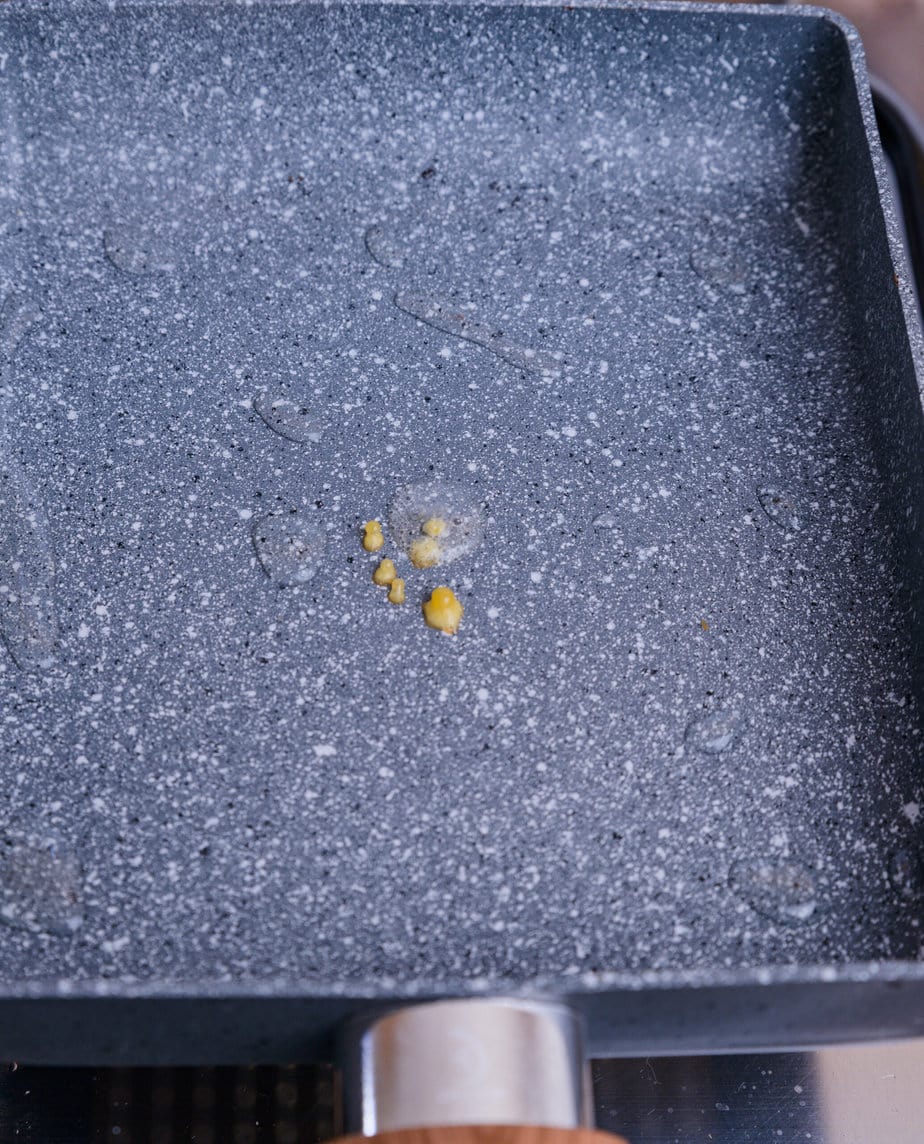
Such adaptability echoes the idea of “mono no aware”: an awareness of fleeting beauty and a recognition that great flavor transcends the shape of the cookware.
Variations of Tamagoyaki
Tamagoyaki is a blank canvas, encouraging you to play with flavors and textures.
Slipping furikake, togarashi or nori sheets between the folds is more than a flavor tweak; it is a show of “kodawari”, the relentless attention to detail that drives Japanese cooking.
Personalizing dashimaki lets you honor tradition while making it your own, mirroring the way Japanese cuisine constantly evolves.
Atsuyaki Tamago
Atsuyaki tamago, literally “thick grilled eggs”, is another standout variation. Its layers are thicker than those in dashimaki, and a touch of sugar or mirin gives it a pronounced sweetness. Soy sauce, when used, can leave a light brown sheen on the surface.
To keep its signature sunny hue, cooks often swap regular soy sauce for usukuchi (light) or shiro (white) soy sauce. The resulting harmony of sweetness, umami and fluffiness makes atsuyaki tamago a crowd-pleaser, prized for both its bright appearance and gentle flavor. It hails from the Kanto region, while dashimaki is a Kansai staple.
The Edomae style
Any discussion of tamagoyaki would be incomplete without Edomae-style tamago (江戸前玉子焼き), the iconic slice that often ends a refined sushi course.
This version mixes much more than eggs: the batter can contain minced shrimp (processed to a paste, not just finely chopped), sugar, salt, grated yam or Japanese potato, mirin, eel or fish paste, and shoyu.
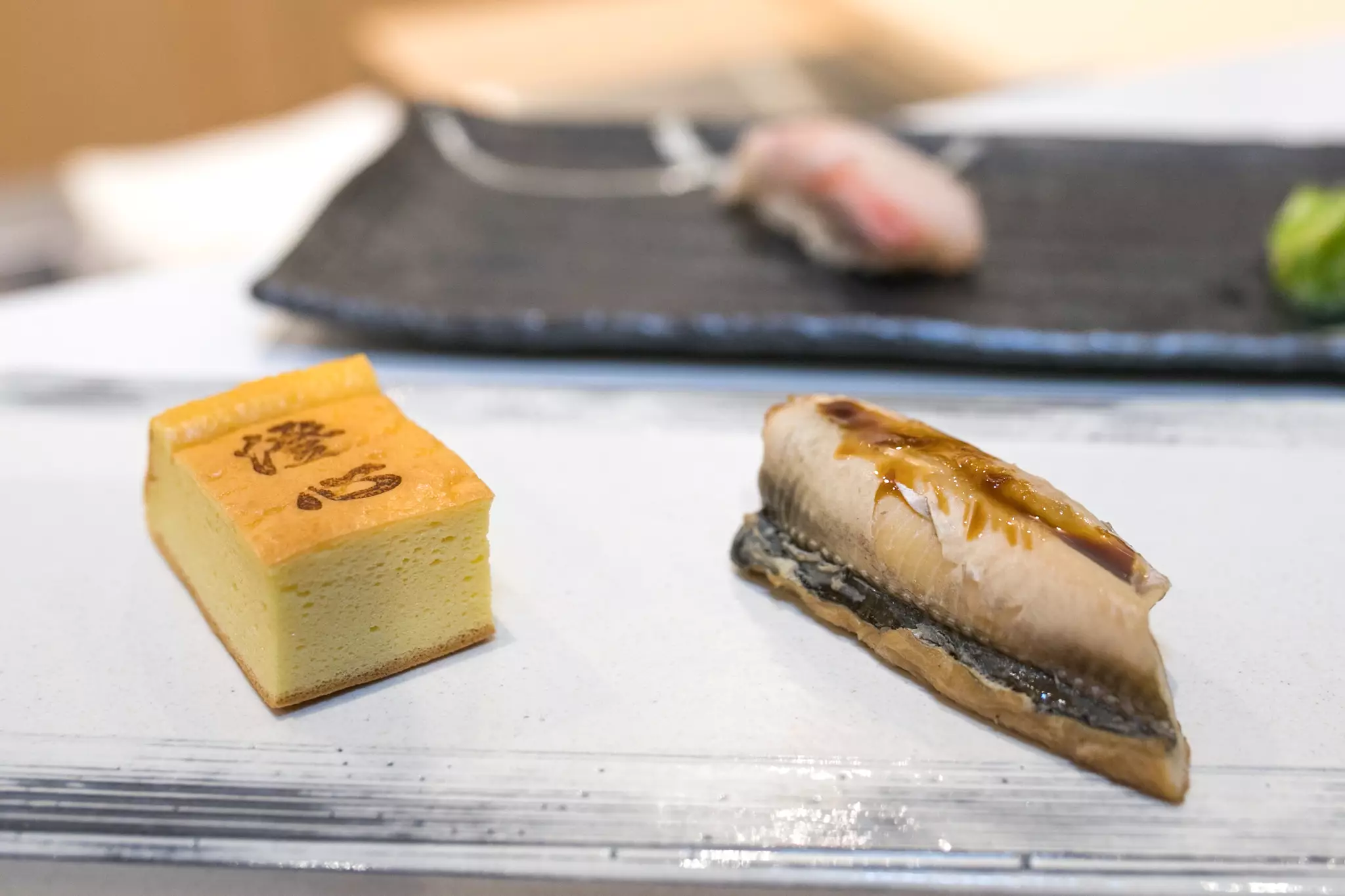
Making it calls for patience: the mixture is stirred for up to 30 minutes before it is beaten and slowly cooked in a makiyakinabe, the same rectangular pan used for tamagoyaki. A few seconds too long on the heat can throw off the texture and flavor balance.
A flawless Edomae tamago should be sweet yet delicate, carry deep umami from the seafood paste, and rise into a dense, souffle-like block. Because it is so exacting, many diners judge a chef’s skill by this single bite; a great Edomae tamago is the perfect way to close an omakase.
Tips for making the Japanese rolled omelette
Adding dashi enhances both taste and texture, but it also loosens the batter and makes cooking trickier, so start with a modest amount until you get the hang of it.
Coat your pan generously with oil, even if it is non-stick… once the egg sticks, the roll is lost.
The main ingredients of Tamagoyaki
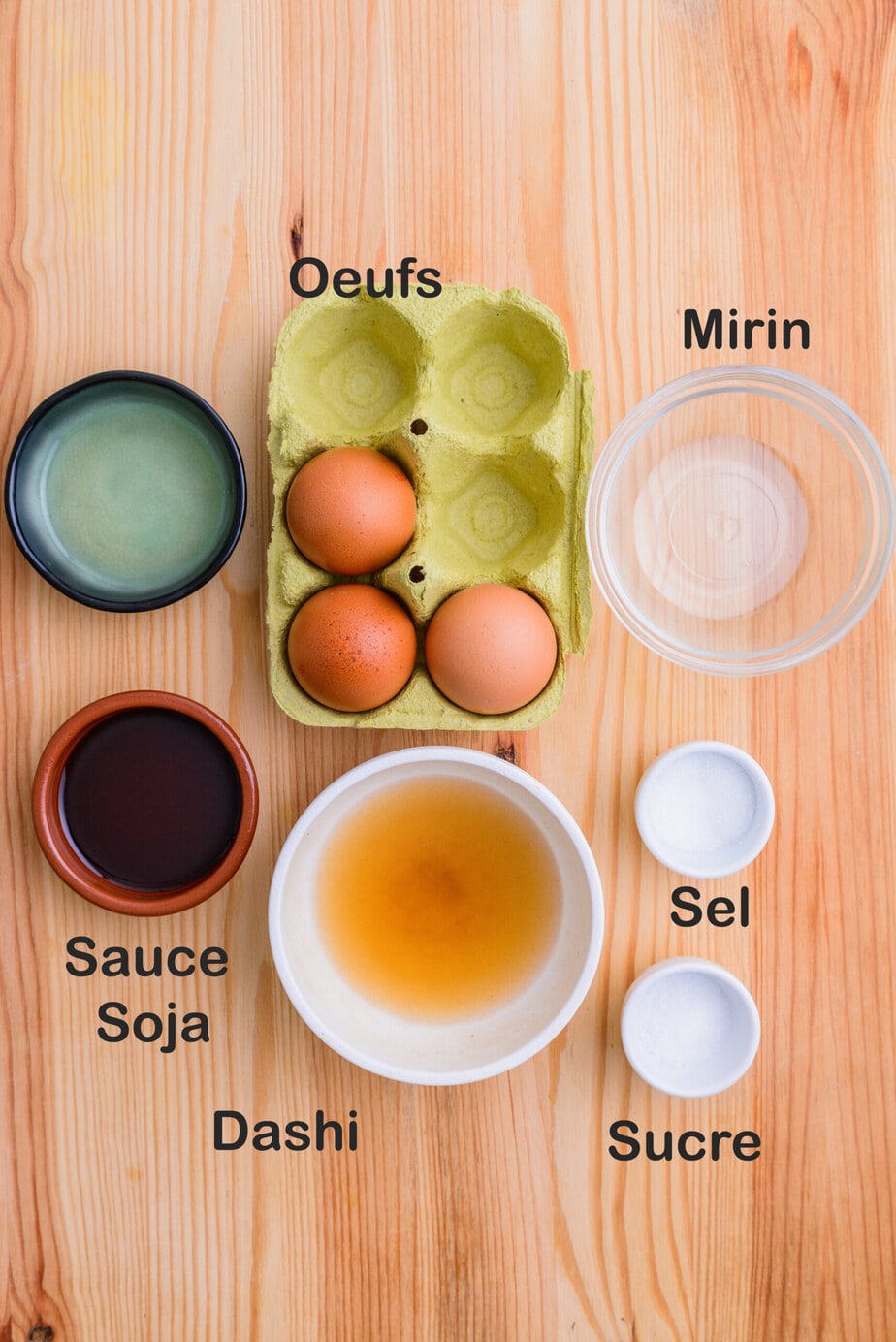
Light soy sauce: you can use tamari or standard Japanese soy sauce (Kikkoman) instead
Dashi: store-bought powder works, though homemade is always best
Mirin: quality mirin is syrupy and sweet, never sour
Daikon: optional, but its crisp freshness makes a great garnish
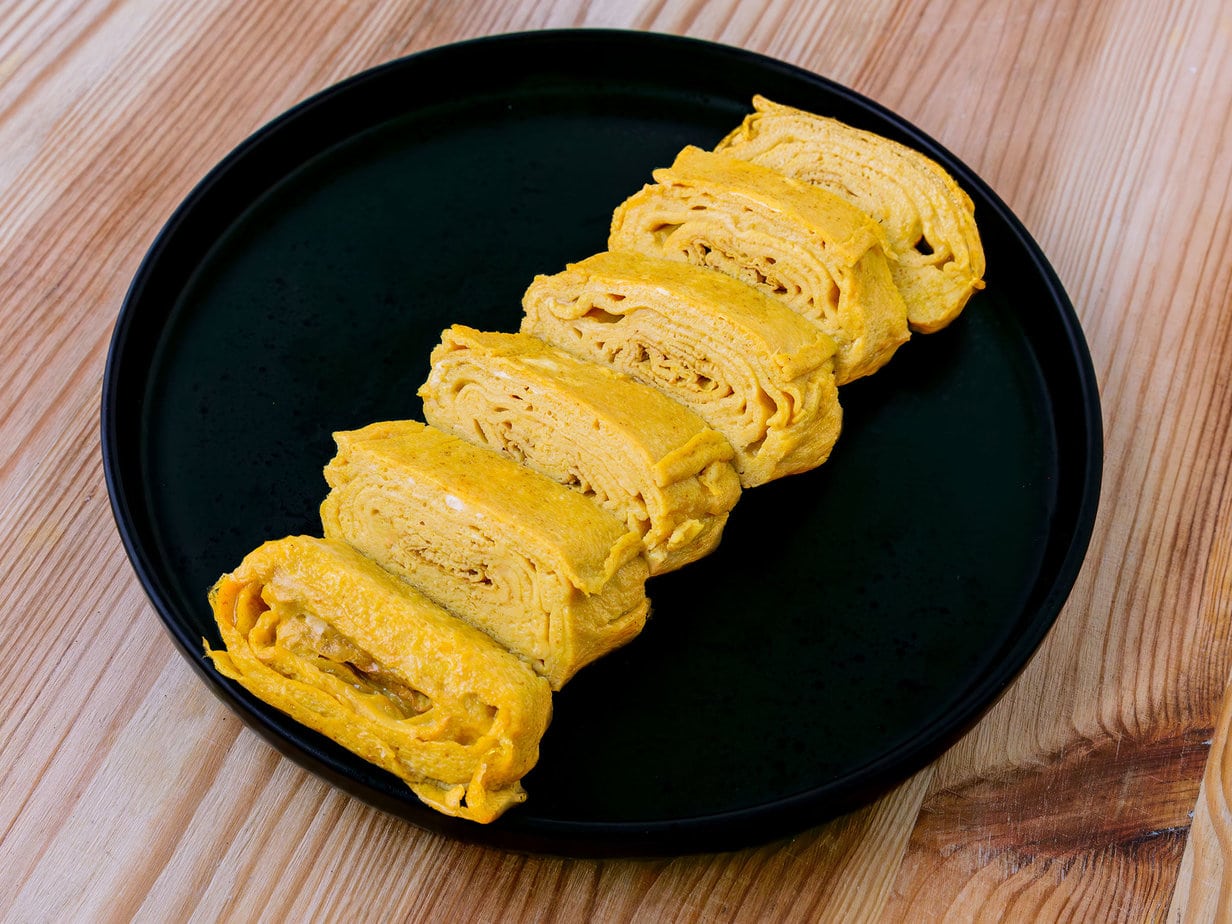
Tamagoyaki – Japanese Rolled Omelette
Equipment
Ingredients
- 3 large eggs
Seasonings
- 45 ml dashi homemade dashi or instant dashi dissolved in water
- 2 teaspoons sugar
- 1 teaspoon light soy sauce
- 1 teaspoon mirin
- 2 pinches salt
For Cooking
- 2 tablespoons neutral oil
Garnish
- 85 g daikon radish
- light soy sauce
Instructions
- In a bowl, gently whisk the eggs with all of the seasoning ingredients. For an ultra-smooth result, optionally strain the mixture once or twice to remove any air bubbles.3 large eggs, 45 ml dashi, 2 teaspoons sugar, 1 teaspoon light soy sauce, 1 teaspoon mirin, 2 pinches salt

- Heat a tamagoyaki pan (or a small non-stick skillet) over medium heat and add the neutral oil.2 tablespoons neutral oil
- Test the temperature with a drop of egg mixture; it should sizzle immediately.
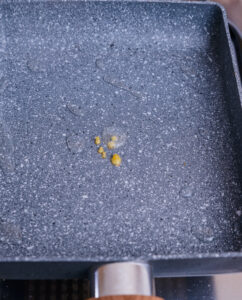
- Pour in a thin layer of the egg and tilt the pan until it coats the entire surface.
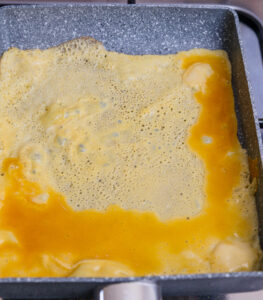
- When the bottom just sets, roll the omelette from the far side of the pan toward the handle.
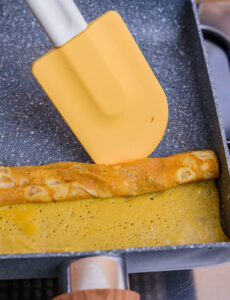
- Brush a little oil onto the exposed pan, then add another thin layer of egg.
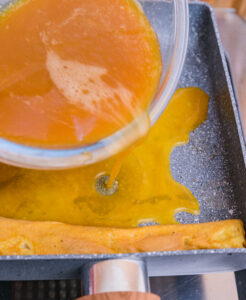
- As soon as this layer is almost set, roll the omelette back toward the opposite side, starting with the existing roll.
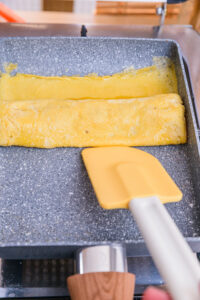
- Repeat the oiling, pouring, and rolling until you’ve used all of the egg mixture.

- If you like a light crust, brown the surface briefly. Transfer the omelette to a bamboo sushi mat, roll to shape, and let it rest for 5 minutes.
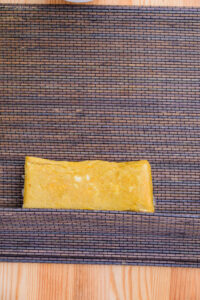
For Serving
- Slice the omelette into 1 cm pieces.

- Grate the daikon, squeeze out excess liquid, and serve alongside the omelette with a splash of soy sauce.85 g daikon radish, light soy sauce
